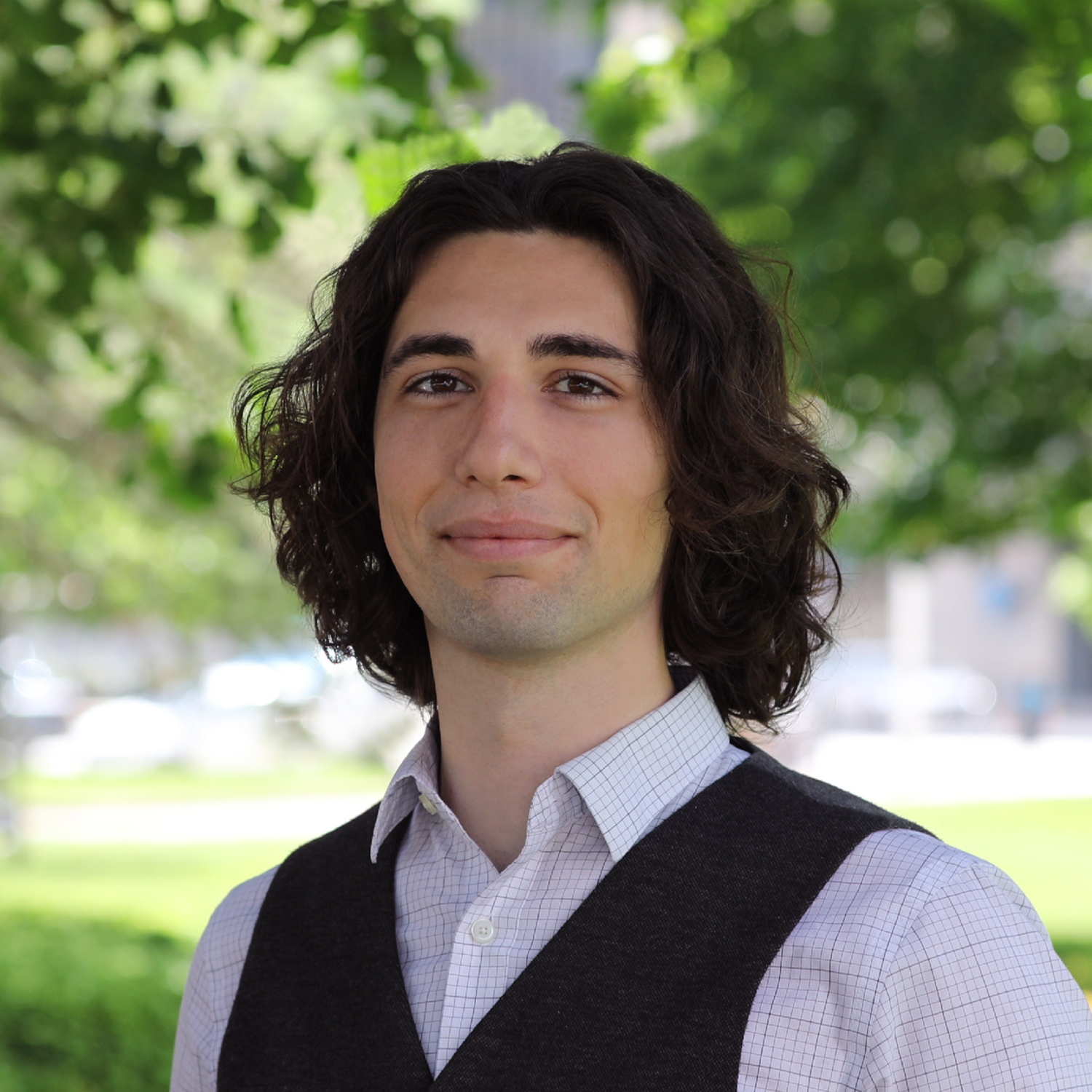Public Opinion Tracker: Teacher Survey Top Takeaways – March 2022
It has been more than a year since teachers gained access to COVID-19 vaccines, which promised to transform the relationship between the pandemic and education. In March 2022, the pandemic continues to affect the classroom in practice—some people still get sick, and some protection measures continue to be in place. But there are signs that COVID-19, at least as a cultural experience that shapes and filters our expectations about the world, is fading.
To better understand how teachers are experiencing education in this new era, we look to our most recent survey of public and private school teachers. From March 16-22, our partner Morning Consult surveyed 1,000 K–12 teachers about the COVID-19 pandemic, professional satisfaction and morale, educational choice policies, and other timely matters.
Here are eight key findings from our latest wave.
1. Many teachers continue to find COVID-19 disruptive to their schooling experiences.
The share of teachers who indicated the COVID-19 pandemic was “very disruptive” to their school or community has risen . More than half of teachers (52%) said the pandemic has been significantly disruptive to their school, the second-highest total for any survey group or location over the last year. While 39 percent of teachers said the same for their communities. In comparison, 27 percent of the general population said the pandemic was disruptive to their communities in the March wave of our monthly survey. Teachers were only marginally more likely to say their personal or household routines were very disrupted by the pandemic in March than December.
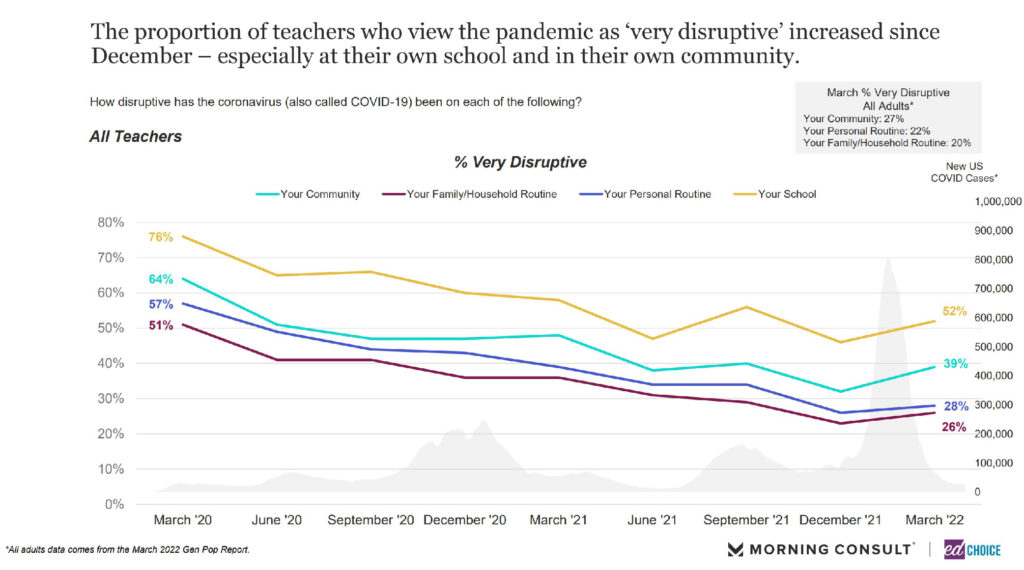
For just more than one out of seven teachers (15%), one of those disruptions in the last month has been students quarantining due to COVID-19. Teachers were much more likely to have had students staying home from school due to COVID-19 if they taught in private schools.
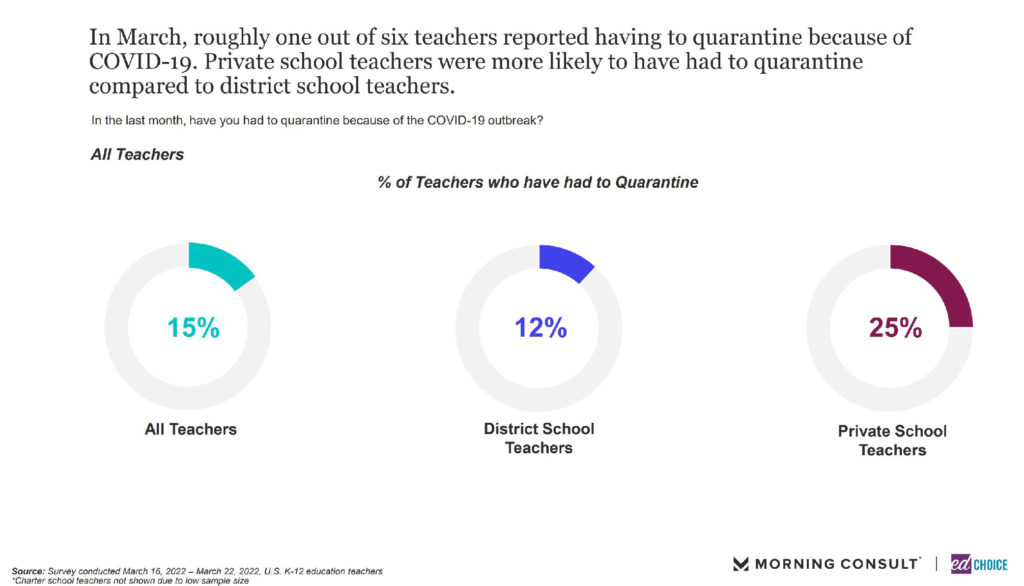
In some cases, the quarantining has been widespread. About three out of 10 teachers reported more than 20 percent of their students missing in-person class time due to quarantining in the last month. About one in 20 teachers said more than 80 percent of their class had quarantined during the month prior.
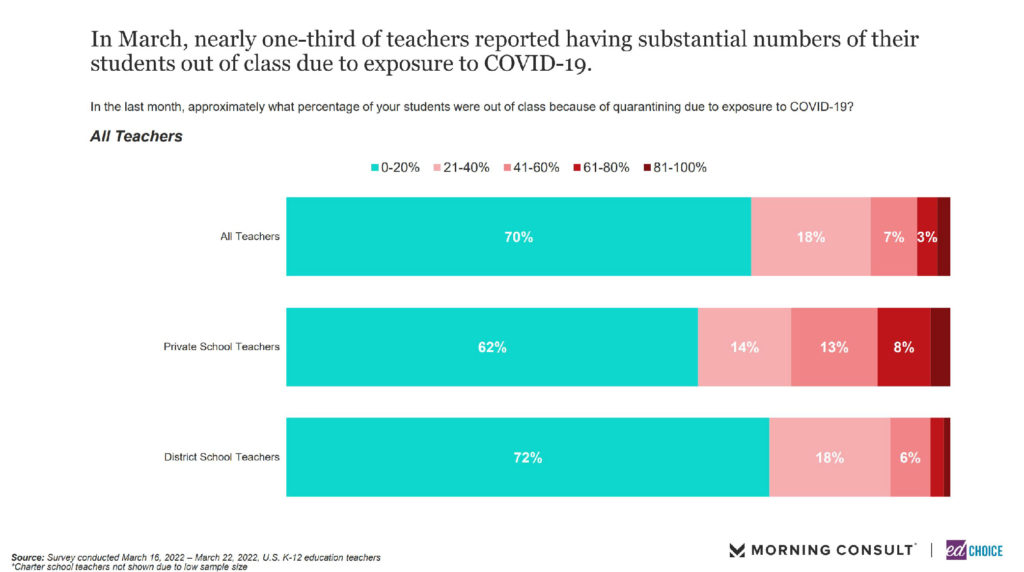
2. Teachers have softened their COVID-19 policy preferences.
Mask mandate popularity among teachers plummeted over the last three months. Less than a third of teachers thought masks should be required for students in K–12 schools, while 33 percent thought students should still be required to wear masks. These totals are all at least 23 percentage points lower than we found in December. Mask mandate favorability also is noticeably lower among teachers than the general population according to the March wave of our monthly survey. Additionally, support for vaccine mandates across educational contexts dropped to levels comparable to that of the general population.
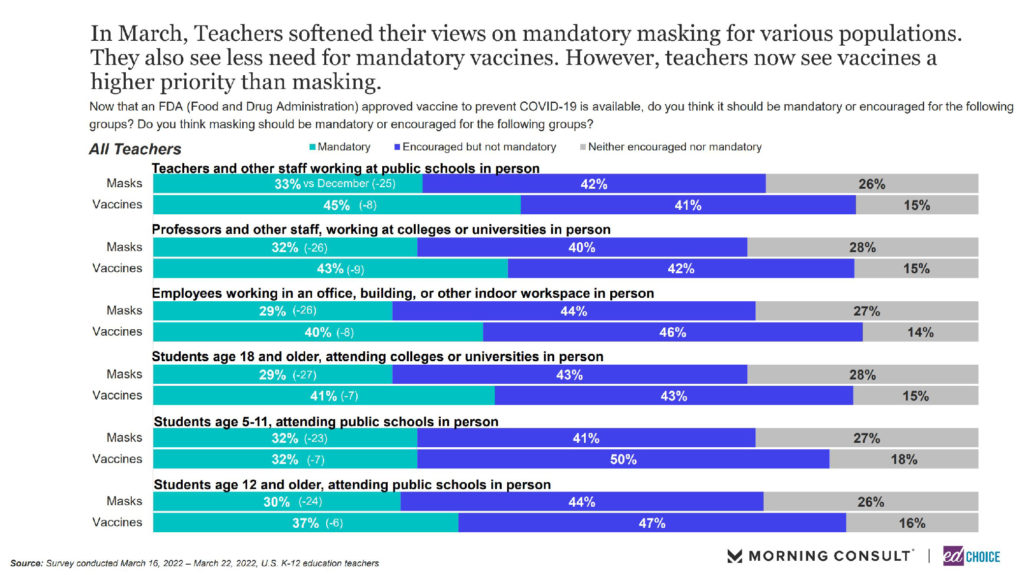
Teachers are overwhelmingly comfortable with returning to the classroom right now. Over half (51%) of teachers indicated they were “very comfortable” with in-person schooling, and a total of 85 percent of them stated at least some level of comfort. Very experienced teachers, defined here as those who have taught for 15 years or more, saw the largest gain in comfort with in-person learning, an 11-point jump since December.
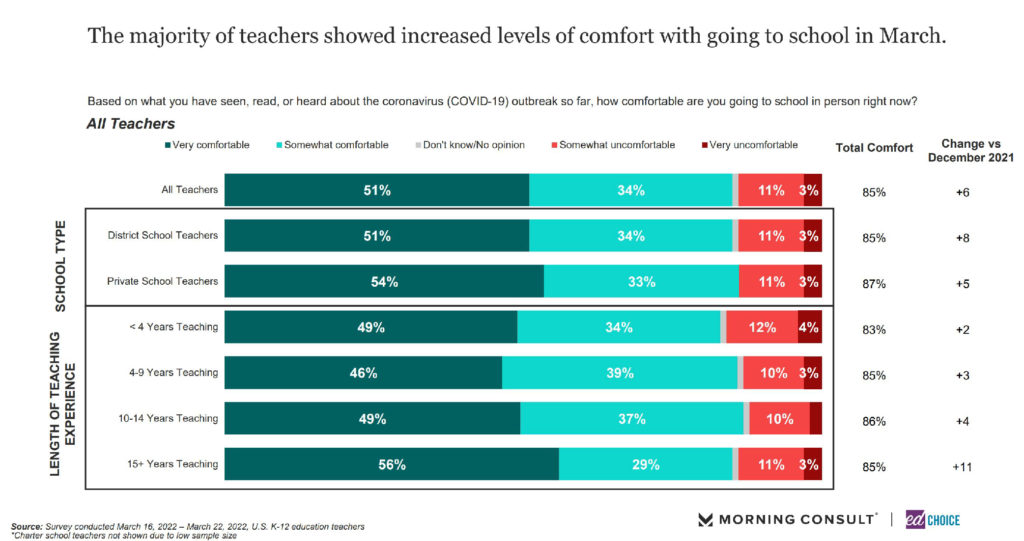
3. Over a quarter of teachers knew of a protest at their local school board this school year.
Twenty-eight percent of teachers said their school board had experienced at least one protest or major disruption in 2021–22, seven percentage points higher than parents reported in our monthly survey. We asked teachers who knew of a protest or disruption to name its motivation. Easily the most popular reason for these protests, according to teachers, was disagreements over masking policies, which was mentioned by 64 percent of teachers who were aware of a protest. The three next-most popular reasons also were related to the pandemic, namely miscellaneous COVID reasons, vaccination issues and remote learning. Cultural issues were a tier below COVID issues, with less than one-fifth of teachers indicating the protests were about racial issues, curriculum concerns, controversial books or LGBTQ issues.
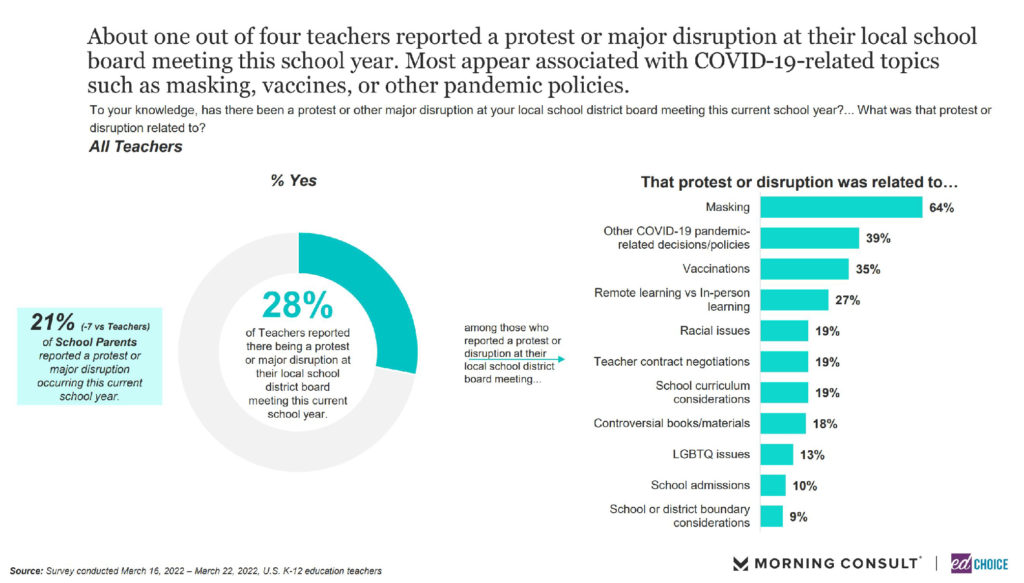
4. Teachers appear more pessimistic about their profession than they were in December.
Teachers were less enthusiastic about recommending the teaching profession to others than they historically have been in our quarterly survey of teachers. When asked to name how likely they would be to recommend the teaching profession to friends or family on a scale of zero to 10, 25 percent of teachers gave a nine or 10, while 46 percent gave a number between zero and six. These results bring the “net promoter” score to –21, a 10-point decline from December. The drop was especially steep for private school teachers, whose net promoter score declined 25 percentage points since last quarter.
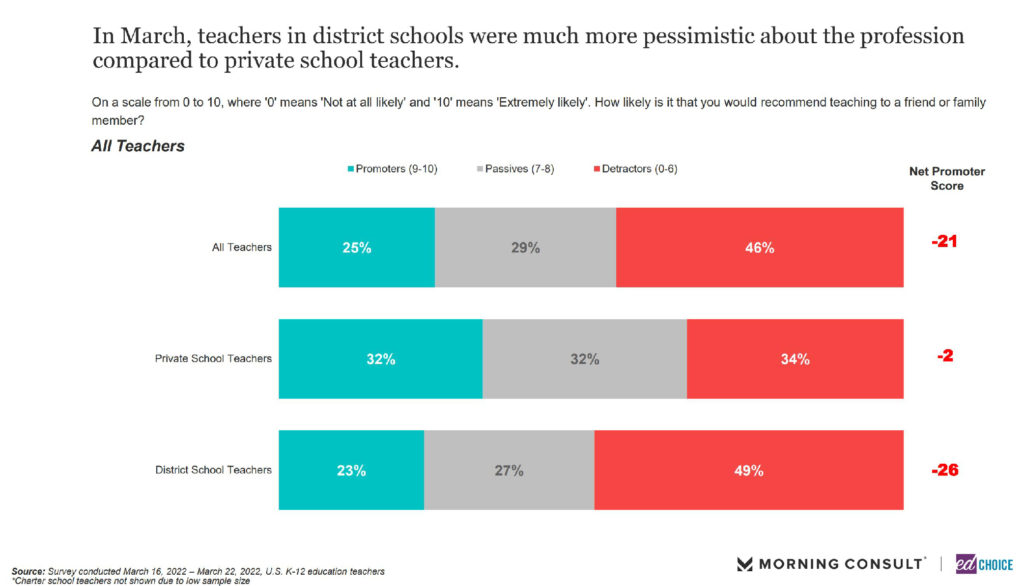
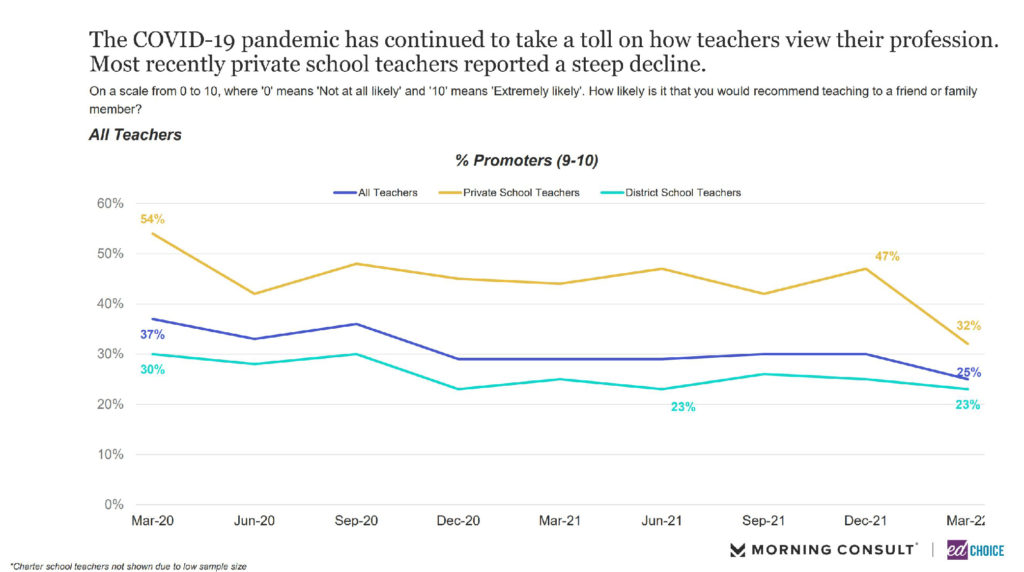
The apparent reduction of teachers feeling fulfillment in their work may at least somewhat translate into more teachers considering leaving the profession altogether. The share of teachers aged 55 or under who had considered quitting teaching in the last three months reached 53 percent, which was the highest we have seen since December 2020, the end of the first full semester of school during the pandemic.
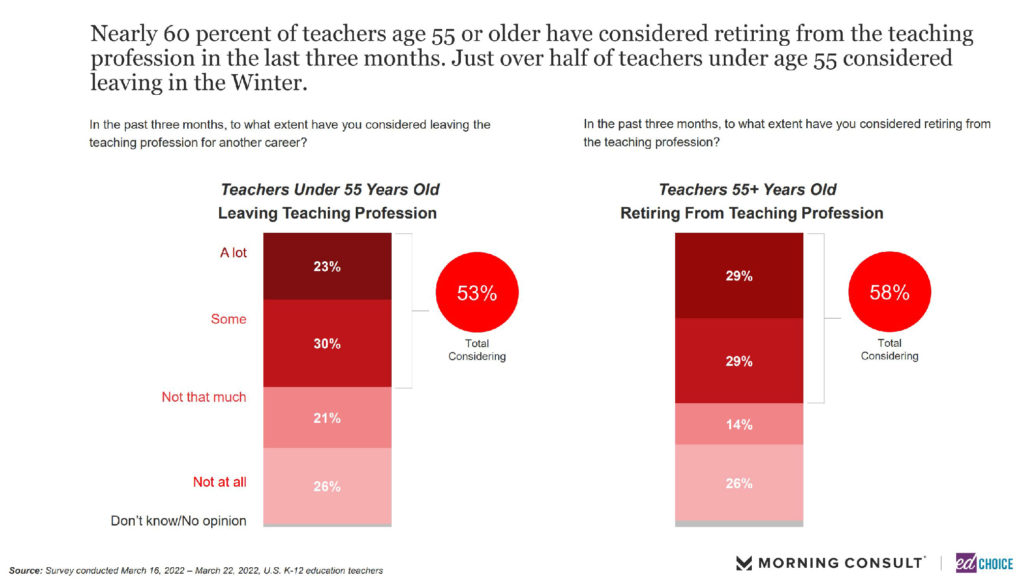
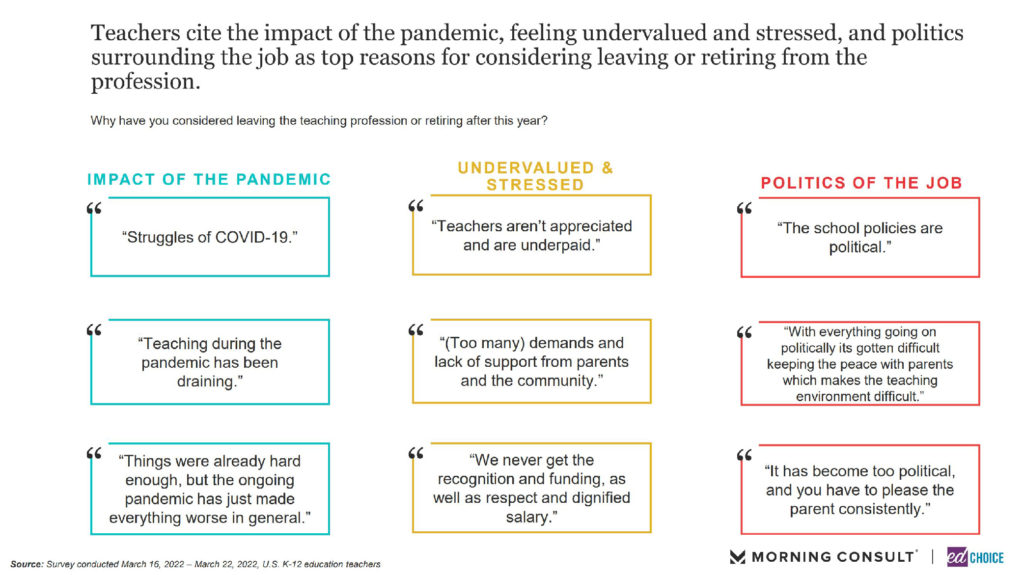
5. A large share of teachers support non-traditional schooling formats.
Forty-two percent of teachers indicated that their ideal school week would involve at least one day spent facilitating instruction outside of school. The share of teachers preferring all instruction facilitated in a school environment rose seven percentage points from December. Traditional district school teachers are the most likely to prefer teaching all five school days in the classroom each week.
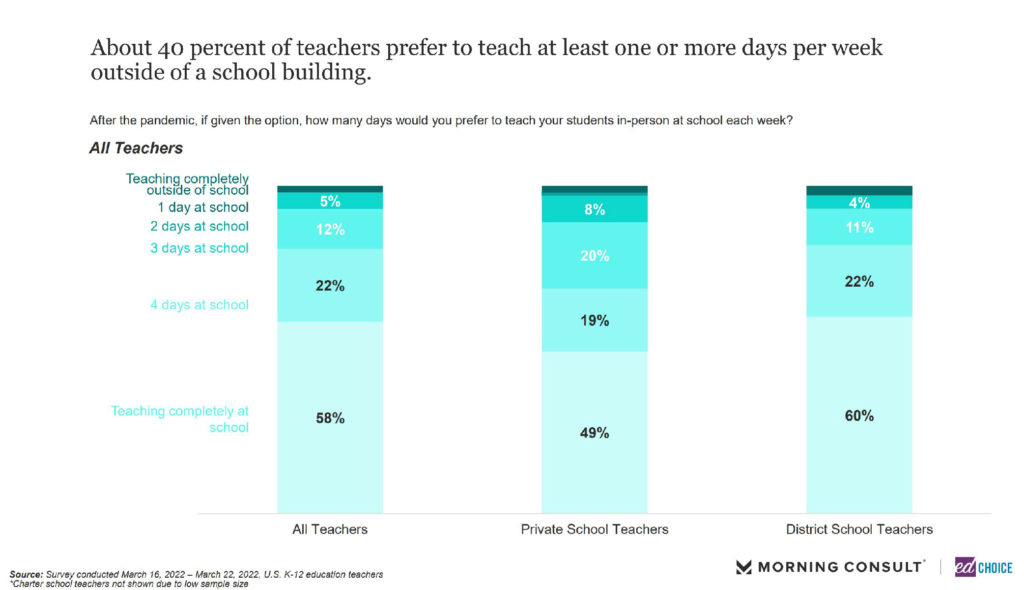
6. About a third of teachers say they have tutored over the last month.
The share of teachers who say they have facilitated tutoring outside of regular school hours recently remained essentially unchanged from December. Thirty-four percent of teachers said they have tutored as such in the last month, seven percentage points fewer than the share who said they have been asked to tutor outside of normal work hours. Private school teachers (42%) are especially likely to have tutored in the last month.
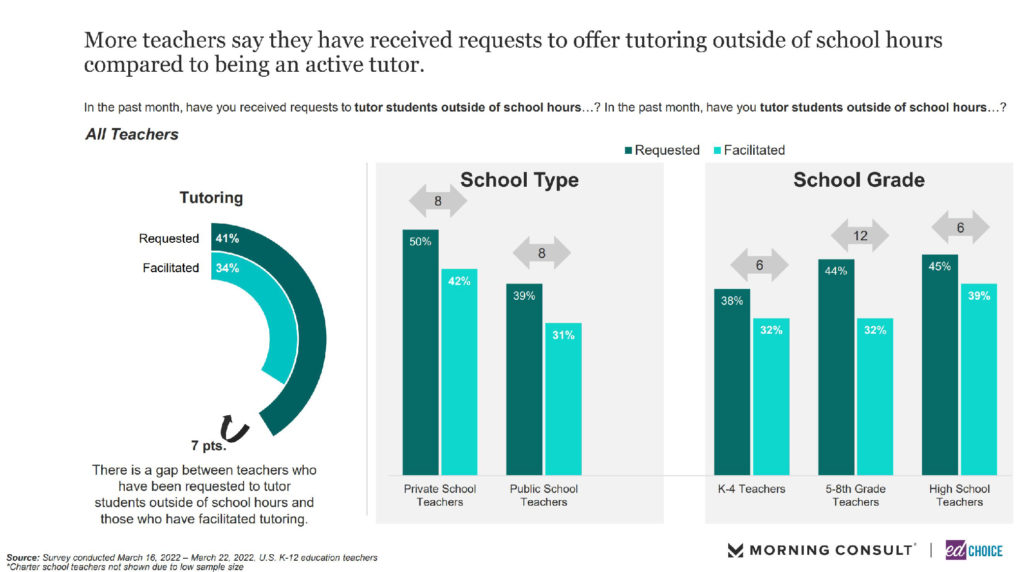
We asked teachers at least somewhat interested in tutoring how much they would need to be compensated for them to tutor outside of regular school hours. In March, the average response was lower than the average amount parents interested in tutoring told us they would be willing to pay.
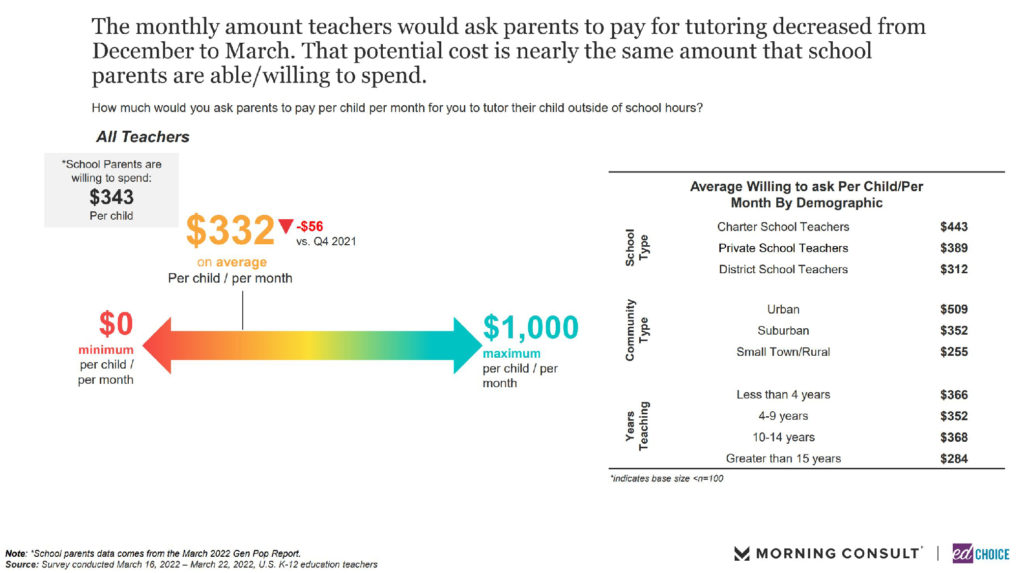
7. ESAs continue to receive the highest and most stable support from teachers compared to other school choice policies.
As in all previous waves of our teacher surveys, teachers are more likely to support than oppose education savings accounts (ESAs), school vouchers and charter schools. ESAs are far and away the most popular of these three policies, with 74 percent of teachers in support and 17 percent in opposition. School vouchers and charter schools saw decreasing levels of support in March compared to December, and strong opponents of school vouchers outnumbered strong supporters.
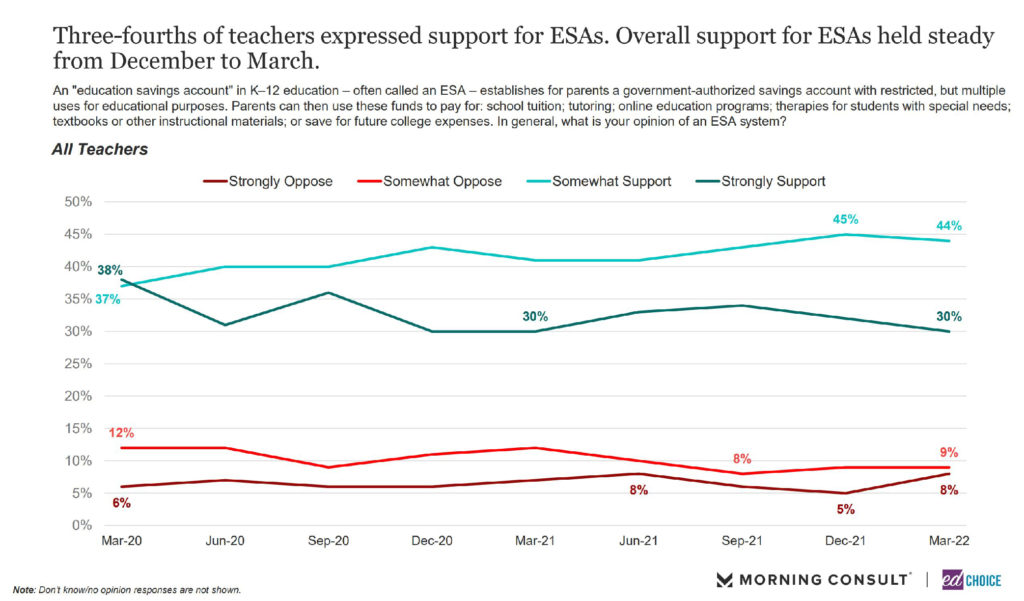
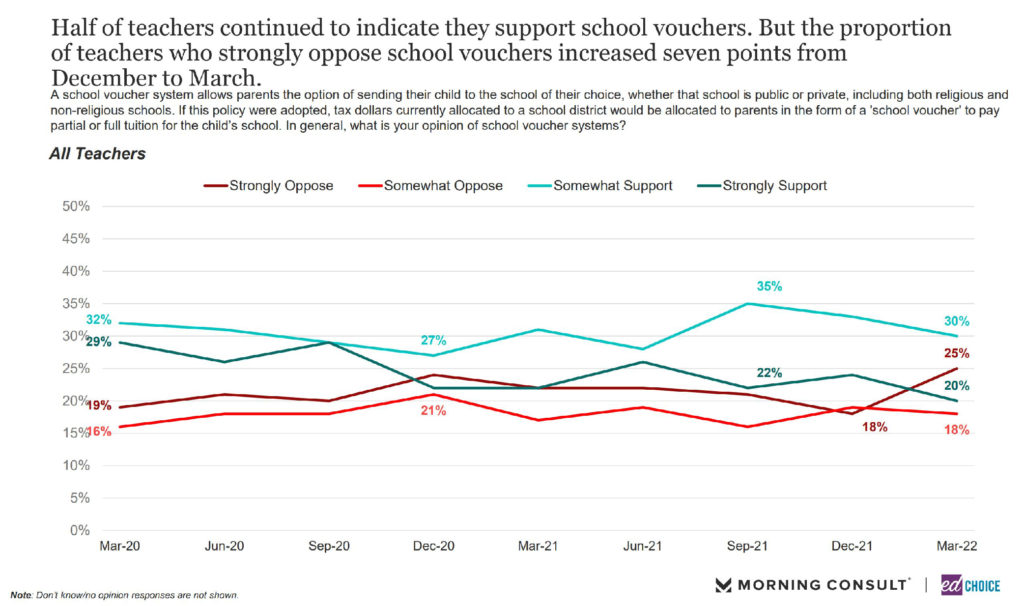
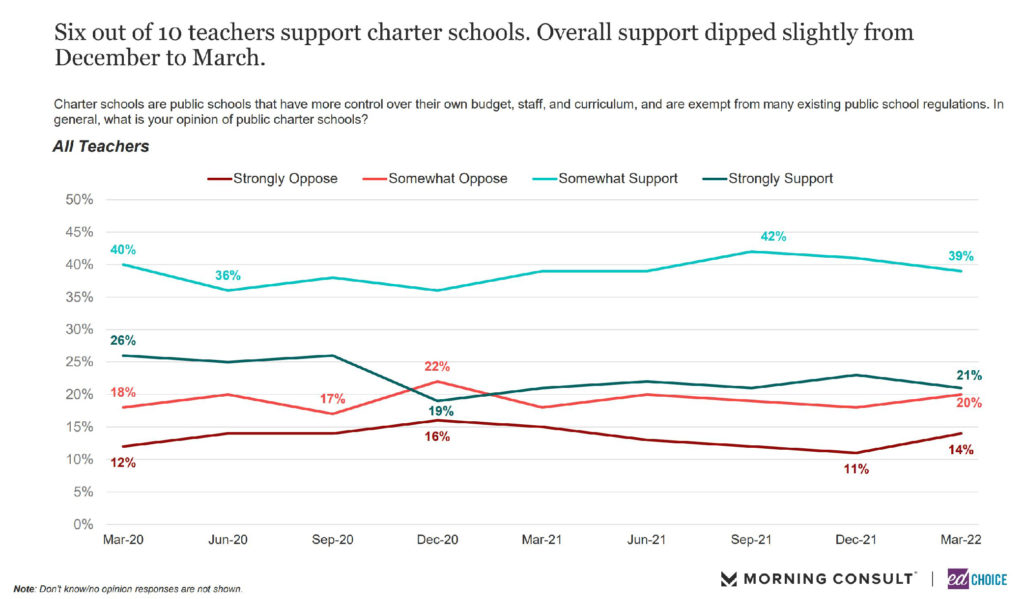
8. Substantially more teachers felt that the amount of standardized testing in K–12 education is too high.
Throughout our quarterly survey of teachers, respondents were much more likely to express that there was too much standardized testing in schools than too little or the right amount of testing. This majority grew from December to March. Just under two-thirds of teachers (65%) said there was too much testing, a 12-point increase from December. Private school teachers saw the biggest increase in this sentiment, growing from 38 percent to 52 percent.
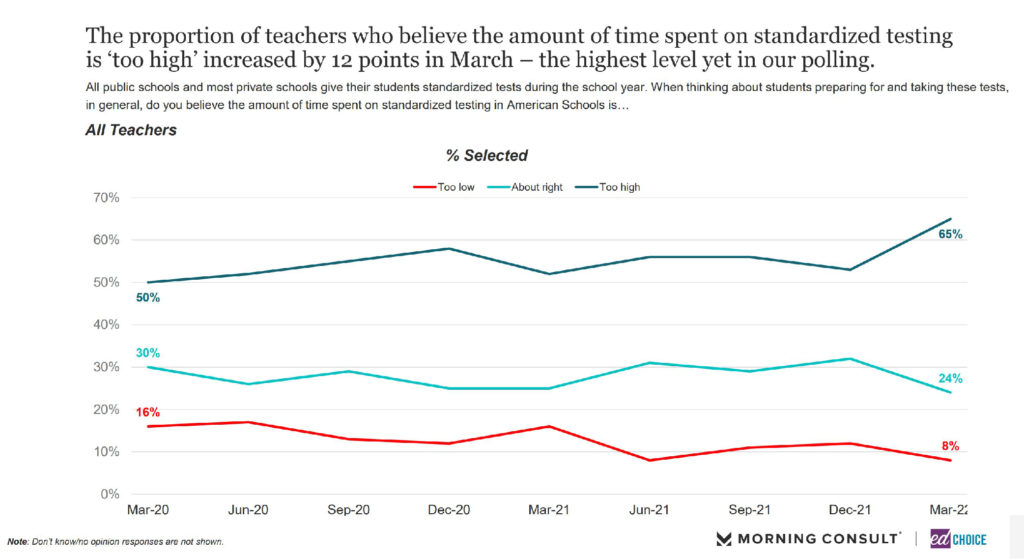
Visit the EdChoice Public Opinion Tracker site to access past reports, crosstabs, questionnaires, and our national and state dashboards. All are updated monthly. We also provide a more in-depth description of our research and survey methods.
Our K–12 education polls archive is updated on a rolling basis, roughly a few times each month. Please don’t hesitate to let us know if we are missing any surveys, or if there are accidental errors.


